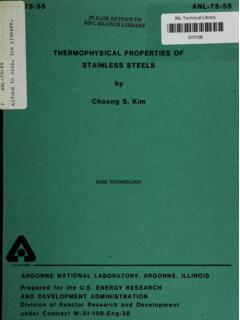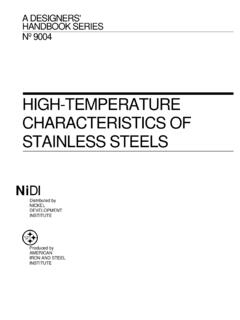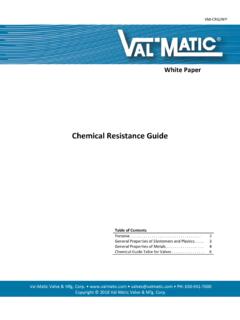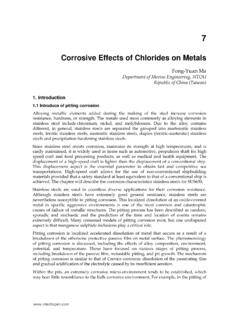Corrosion resistance of stainless steels
Found 7 free book(s)THERMOPHYSICAL PROPERTIES OF STAINLESS STEELS
inldigitallibrary.inl.govVarious types of stainless steels are used in nuclear reactors as fuel cladding and structural materials because of their favorable nuclear characteristics, corrosion resistance, and good mechanical properties. Stainless steels Type 304L and Type 316L are two such materials and are the subject of present study. Table 1 shows the approximate ...
HIGH-TEMPERATURE CHARACTERISTICS OF STAINLESS …
nickelinstitute.orgstainless steels particularly useful in high-temperature environments are described, and typical engineering data are presented. Also discussed, but as a secondary consideration, are the corrosion-resistance qualities of stainless steels at elevated temperatures. It should be noted that the material presented in this booklet is intended as
Chemical Resistance Guide - Val Matic
www.valmatic.comwithstands corrosive attack better than any of the 400 series stainless steels and in most conditions its corrosion resistance closely approaches that of 300 series stainless steel. 17‐4 PH is primarily used as a stem material for high pressure butterfly and ball valves.
Corrosive Effects of Chlorides on Metals - IntechOpen
cdn.intechopen.comAlloying metallic elements added during the making of the steel increase corrosion resistance, hardness, or strength. The metals used most commonly as alloying elements in stainless steel include chromium, nickel, and molybdenum. Due to the alloy contains different, in general, stainless steels are separated the grouped into martensitic stainless
An Introduction to Super-Duplex Stainless Steels
www.corrotherm.co.ukStainless Steels Super-Duplex Stainless Steels and their characteristics The first-generation Duplex stainless steels were developed more than 70 years ago in Sweden for use in the sulfite paper industry. Duplex alloys were originally created to combat corrosion problems caused by chloride-bearing cooling waters and other
Corrosion testing techniques and ... - Stainless Foundry
www.stainlessfoundry.comMar 01, 2016 · corrosion resistance). Austenitic stainless steels are susceptible to sensitization after heating to roughly 500°C to 800°C. The addition of carbide stabilizing elements such as niobium or titanium can help to ameliorate the problem, however, processes such as welding a susceptible material can still detrimentally affect its
Magnelis® - ArcelorMittal
industry.arcelormittal.comMagnelis® demonstrates even better corrosion resistance than a post-galvanised coating. Paintability Magnelis® can be post-painted and offers superior corrosion resistance compared to other metallic coated steels. Thanks to its highly resistant, adherent metallic layer, Magnelis® can be processed using a variety of methods.






